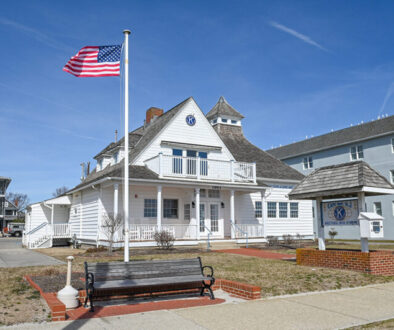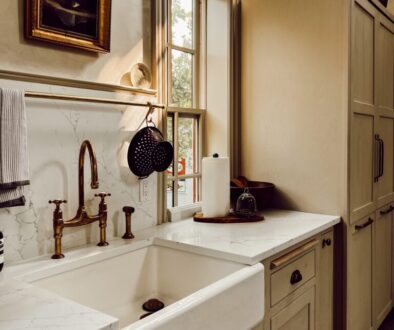Art Nouveau: Like a Breath of Spring

Art Nouveau draws inspiration from the natural world with its organic, graceful style. It speaks of birth and renewal as sure as the first signs of spring. It was a compelling, energetic style in the art world from the 1890s to 1914 and the start of World War I. And although a trip to Paris will render countless examples of Art Nouveau from their Metro signs, art, furniture, and jewelry, you don’t have to travel there to discover this mesmerizing art form.
No matter the example discovered, each bears a resemblance to shapes and lines found in nature, including the female form. A woman’s flowing locks or her feminine curves take precedent. The era and cultural norms dictated this new artistic expression that created a general shakeup in the art world. Art Nouveau often mimics things like the wing of a butterfly in flight, a swan gliding across a lake, or dainty flowers beginning to open at sunrise. This sense of motion and beauty is what the artists and designers tried to capture in their designs—like the Parisian Metro signage and lighting by Hector Guimard.
The Victorian era with its stodgy, high-minded morals was challenged by this daring, innovative, and organic style. And it was a success, producing limited pieces over two decades. Although pieces discovered today are rare, Art Nouveau is hotter than ever among collectors.
In America, Louis Comfort Tiffany embraced Art Nouveau, incorporating his vision with experimentation in glass. His lamps perfectly capture the art form, with flowing wisteria, sinuous curves of vines and lilies, prompting one to pause at its beauty as one would study a flower. In 1894 he patented the process of Favrile glass by using metallic oxides that colored the interior of the glass, giving the piece its luminous, iridescent appearance. The rainbow of colors that shine through a Tiffany shade is like no other. Although many have tried to imitate, this unique glass cannot be replicated, and this is the reason Tiffany glass, whether in lamps or lead glass windows, commands such high prices.
Art Nouveau jewelry may include cloisonné—which is liquid enamel poured into fine gold wire shaped into swirling, organic designs—or the basse-taille technique, where the design is engraved into the metal with a transparent enamel layer. Various types of stones, such as moonstone, opal, or garnet, were often added, dangling from long thin chains. Imagine streams of water flowing over a waterfall, the drops lit by the sun in a kaleidoscope of color.
Louis Comfort Tiffany and Rene Lalique, who was French, designed exquisite jewelry using precious gems in 18kt gold. Catering to a wealthy clientele where earlier demand was to use precious stones like diamonds and emeralds, the Tiffany artisans created one-of-a-kind pieces applying semi-precious stones, such as faceted yellowish-red citrine mimicking autumn colors, or luminescent black opals, with flashes of blue and green set into organic designs. Each piece was handcrafted, often with the client in mind. One piece may be set in a chunky design with stones as though plucked from the earth, another may use a grapevine motif swirling around garnets or sapphires. Tiffany drew inspiration from creatures such as the dragonfly with its veined gossamer wings not only in jewelry but in lighting. His pieces are to be cherished for the vision that belonged to him and his talented artisans. Although Tiffany pieces can command prices of $10,000 or more, the pieces using lapis lazuli, amethyst, jade, and sapphires may bring less—but don’t count on it.


Lalique jewelry can be a pin with a fairy goddess adorned with seed pearls and delicate veined gold wings. His design is mysterious and elegant, the Lalique signature. Precious gems are replaced by semi-precious stones, sometimes incorporating ivory and mother of pearl, giving the piece a sculptural appearance. Coral and moonstone combined to give the jewelry the uniqueness that defined Lalique. Nymphs and femme fatale figures were incorporated into his artistry. Like Tiffany, Lalique used dragonflies as inspiration: the curves of the wings and the thin sinuous body could represent a female performer on stage with arms outstretched as the soft folds of the costume dripped downward. Each piece is unique as the price will reflect. Owning a Tiffany or a Lalique piece will set you back quite a few dollars.
Gustav Klimt of Austria in 1900 and Alphonse Mucha of Czechoslovakia in 1894 stormed the art world. Klimt, a symbolist painter, with his use of blocks of gold leaf applique and vibrant colors, depicted women as alluring, erotic creatures. Often in a semi-nude state, including the pregnant form, women appeared with an untouchable respect and were placed on a pedestal. Their shapes melt into a background not from this world, with prominent facial features, slender hands, and more brought into focus.
Alphonse Mucha is known for his poster art, particularly of Sarah Bernhardt, the French actress. His use of soft, flowing lines displays sensuousness in his work, and often the subject is dressed in soft and billowing garments. Occasionally, flowers embellish the model’s wavy long hair against botanical backdrops.
A collector is fortunate if they discover an Art Nouveau necklace or pin in a local jewelry store or a lead glass lamp, artwork, or furniture in an antique shop. Typically, to obtain Tiffany or Lalique jewelry requires visiting art galleries and high-end auction houses. On a rare occasion, a piece may slip into an estate sale, but you must be willing to pay a premium.
I discovered some exquisite Art Nouveau jewelry at O’Neill’s Estate Jewelry in Cape May. There was a necklace, dripping in 14kt yellow gold interlocking chains accentuated with dainty pearls with an enamel flower at its center. In addition, there was an amethyst ring in yellow gold with willowy leaves supporting the gorgeous purple stone, making it a showpiece. A surprise find was a display hand mirror, a classic example of Art Nouveau: a nude woman with arms outstretched holding the mirror, enveloped by vines and flowers.
So, it’s refreshing that you don’t have to visit Paris to discover Art Nouveau—but I won’t stop you if you feel inspired to book your next flight.



